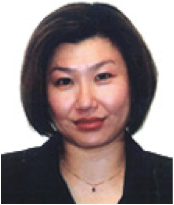Memo #56
Erin Aeran Chung – echung [at] jhu.edu
 In the mid 2000s, Korea and Japan unveiled unprecedented proposals for immigrant incorporation. This included the Basic Act on the Treatment of Foreigners in Korea and the Ministry of Internal Affairs and Communications’ plan for Multicultural Coexistence Promotion in Local Communities in Japan. These plans acknowledged for the first time the need to manage foreigners settled within each country. But they also represented contrasting frameworks for their incorporation. In Korea, there was centralized rights-based legislation that targeted specific immigrant groups and in Japan, there were decentralized guidelines that prioritized community-based partnerships.
In the mid 2000s, Korea and Japan unveiled unprecedented proposals for immigrant incorporation. This included the Basic Act on the Treatment of Foreigners in Korea and the Ministry of Internal Affairs and Communications’ plan for Multicultural Coexistence Promotion in Local Communities in Japan. These plans acknowledged for the first time the need to manage foreigners settled within each country. But they also represented contrasting frameworks for their incorporation. In Korea, there was centralized rights-based legislation that targeted specific immigrant groups and in Japan, there were decentralized guidelines that prioritized community-based partnerships.
How do we explain divergent policies for incorporating immigrants in Korea and Japan? Both countries share immigration and citizenship policies based on ethno-cultural homogeneity, overlapping immigrant populations from neighbouring Asian countries, and dilemmas for accommodating social diversity while adhering to liberal democratic principles. The divergent approaches are not products of deliberate decision-making to manage the permanent settlement of immigrants. Rather, the approaches are reflective of grassroots movements that drew on existing strategies previously applied to incorporate historically marginalized groups in each society prior to the establishment of official incorporation programs.
Although Korea and Japan confront rapidly declining working age populations, both countries kept their borders closed to unskilled workers and met labour demands through de facto guest worker programs and preferential policies for co-ethnic immigrants from the mid-1980s to the early 2000s. Because there was no directive from national governments, local communities and civil society actors used the tools available to them to confront the challenges faced by both new immigrants and the communities in which they lived. Migrant workers in Korea made significant inroads in gaining rights largely because of the strong tradition of labour and civil society activism in Korea’s democratization movement. In Japan, grassroots movements led by generations of Korean residents set the foundation for decentralized, community-based strategies for incorporating new immigrants from the late 1980s.
In Korea and Japan, the processes of immigrant incorporation – in the forms of advocacy, support, and political mobilization as well as the establishment of services, institutions, and local programs for foreign residents – preceded either country’s state-level acknowledgment that immigrants needed to be incorporated within their borders.
About the Author:
Erin Aeran Chung is the Charles D. Miller Assistant Professor of East Asian Politics and Co-Director of Racism, Immigration, and Citizenship Program in the Department of Political Science at the John Hopkins University
Links:
- Chung, Erin Aeran, Workers or Residents? Diverging Patterns of Immigrant Incorporation in Korea and Japan, Pacific Affairs, volume 83, No. 4, December 2010
- Immigration and Citizenship in Japan, Book by Erin Aeran Chung, March 2010
- The Politics of Contingent Citizenship: Korean Political Engagement in Japan and the United States, in Diaspora without Homeland: Being Korean in Japan (edited by Sonia Ryang and John Lie), 2009
Related Memos:
- Regulating Pacific Seasonal Labour in Australia by Pacific Affairs (Memo #18)
- Our other Memos about Japan and South Korea
- Other Memos inspired by Pacific Affairs articles